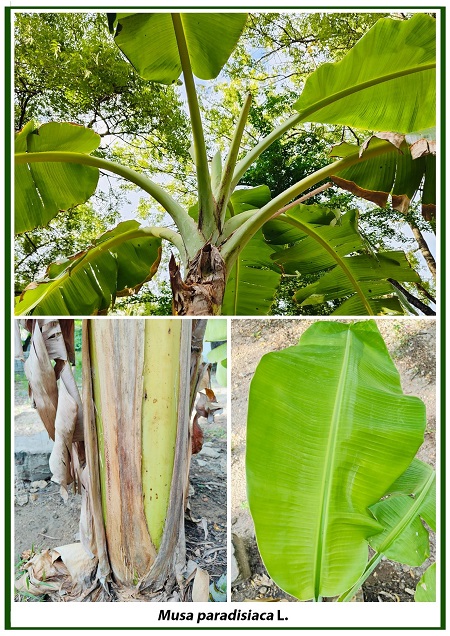Tree Details
 | |
| Musa paradisiaca l. | |
| Musaceae | |
| Musa paradisiaca is commonly referred to as a banana | |
| வாழை | |
| A large tree-like herb | |
| Asia | |
| Habit:A large tree-like herb with thick rhizome, pseudostem fleshy, succulent formed by the imbricate leaf sheaths Leaves: Leaves are elongated oval in shape and deep green in colour with a prominent midrib. Inflorescence:Terminal branched spadix Flower:Bracteate, ebracteolate, sessile, trimerous, unisexual or bisexual, flowers are zygomorphic and epigynous.Perianth: Tepals 6, biseriate, 3+3 syntepalous,. Androecium: Stamens 6, arranged in two whorls of 3 each, arranged opposite to the tepals. Gynoecium: Tricarpellary, syncarpous, the median carpel anterior, trilocular, ovary inferior, numerous ovules on axile placentation Fruits: An elongated fleshy berry. Seeds: have seeds, although they are not prominent as in other fruits | |
| Throughout the year | |
| anthocyanins, flavonoids, anthraquinones, and phlorotannins | |
| flowerused to treat ulcers, dysentery, and bronchitis. | |
| Backside of the Zoology Department |